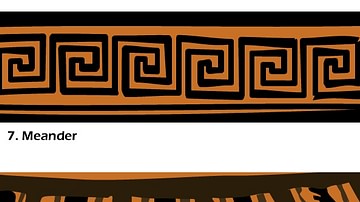Illustration
The base of a cup which shows graffito - an incised mark, usually in the form of letters or numbers but also sometimes words and phrases. When such marks are painted they are called dipinto. The marks may indicate prices, trademarks and ownership or have been used by potters to match vessels with lids after firing. They most often occur under the foot of pottery vessels. This example is from Attica, c. 490-470 BCE. (British Museum, London).
References
World History Encyclopedia is an Amazon Associate and earns a commission on qualifying book purchases.Cite This Work
APA Style
Museum, T. o. t. B. (2013, April 23). Greek Pottery Graffito. World History Encyclopedia. Retrieved from https://www.worldhistory.org/image/1150/greek-pottery-graffito/
Chicago Style
Museum, Trustees of the British. "Greek Pottery Graffito." World History Encyclopedia. Last modified April 23, 2013. https://www.worldhistory.org/image/1150/greek-pottery-graffito/.
MLA Style
Museum, Trustees of the British. "Greek Pottery Graffito." World History Encyclopedia. World History Encyclopedia, 23 Apr 2013, https://www.worldhistory.org/image/1150/greek-pottery-graffito/. Web. 12 May 2025.






